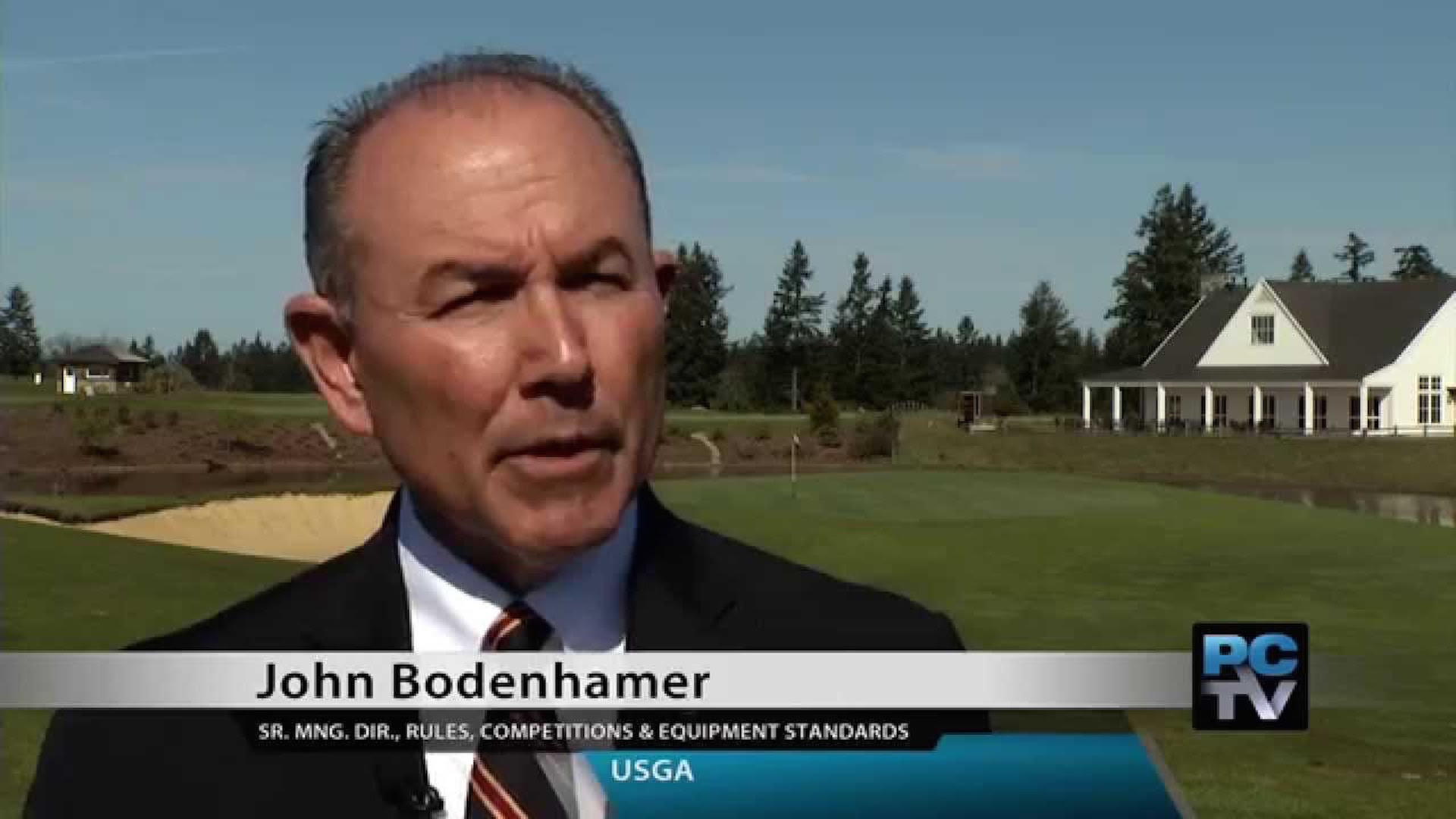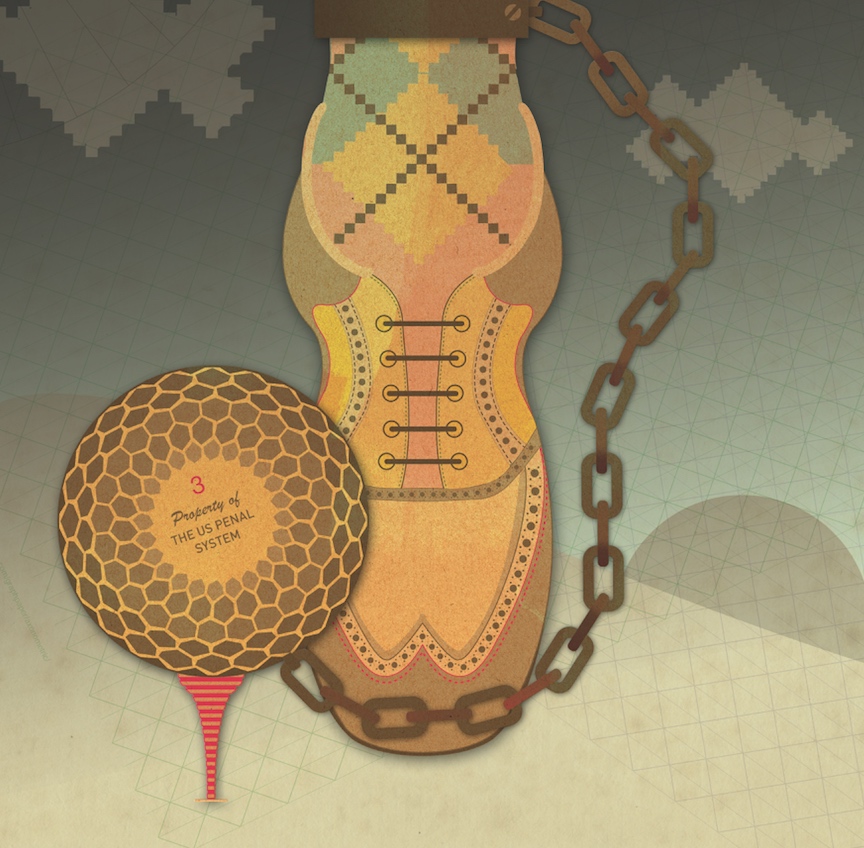Special Report
Latest > It's D-Day for golf's rule book
Mar 1st, 2017
It's D-Day for golf's rule book
Here are the proposals
Words: Tim Southwell Photography: Getty Images
Ever thought to yourself: "Why the hell am I not allowed to repair some thoughtless buffoon's spike marks which threaten to make my put ricocheted off line?". How about when you've accidentally moved your ball or your ball marker on the putting green and end up having to penalise yourself rather than simply replacing the ball to its original position?
Well, today's the day it's all going to change. After four year's of discussion, several late nights, a lot of sandwiches and a large helping of brouhaha, the R&A and the USGA, the game’s two governing bodies, are about to reveal the first changes in the highly anticipated new rule book for golf.
 "Actually, Zach, I think you'll find that under the new rules, the Claret Jug now belongs to me." Martin Slumbers gives Zach Johnson both barrels from Rule 14, sub section 33, paragraph 11.
"Actually, Zach, I think you'll find that under the new rules, the Claret Jug now belongs to me." Martin Slumbers gives Zach Johnson both barrels from Rule 14, sub section 33, paragraph 11.
“It's going to be the biggest change for our generation,” says R&A CEO Martin Slumbers. "The feedback from pros on both sides of the Atlantic so far is very positive.
"They like the way that we're thinking about modernising the game, and they like the way that we've sort of codified it and brought things into what you call more logical groups of rulings, and I would expect that most of the people will welcome the proposals.
“Will somebody have a different view? Of course they will, and that's fine, that's why we're going into consultation for eight to nine months.
"Somebody better get the sandwich-making process going sharpish, and we should all prepare ourselves for a lot more brouhaha in the coming months."
He might not have said that last bit. Other expected changes include cutting the time allotted for find a ball from five minutes to three, and allowing players to drop a ball from any height when taking relief rather than the current stipulation of shoulder height. Plus, the use of club-lengths for taking relief will be eliminated. These are just a few of many impending adjustments that aim to simplify the Rules of Golf and change the public's perception that golf is an overly-stuffy and complicated sport. Amen to that.
The USGA's Senior Managing Director Of Rules, John Bodenhamer claims: "Every aspect of the rules, from the content to how they’re delivered, to how they’re written, to what they look like in writing, is all going to be different.”
 John Bodenhamer reacts angrily to suggestions that the level of brouhaha at a recent Rules Committee meeting was unnecessarily and possibly dangerously high. "That simply isn't true," said Bodenhamer. "We keep a very keen eye on the brouhaha levels in our meetings and I can assure you there has been no breach whatsoever."
John Bodenhamer reacts angrily to suggestions that the level of brouhaha at a recent Rules Committee meeting was unnecessarily and possibly dangerously high. "That simply isn't true," said Bodenhamer. "We keep a very keen eye on the brouhaha levels in our meetings and I can assure you there has been no breach whatsoever."
Mike Davis, the USGA’s Executive Director, added: “How come we can’t have an instance where someone can [take their phone and] say ‘Siri, I hit my ball into a water hazard. What are my options?’"
The answer to that is probably because Siri will say: "Sorry Mike, I didn't get that" or more likely "OK, here's what I found – You want to watch the Dukes Of Hazard. OK, I found five cinemas near you that are showing Dukes Of Hazard.."
 "It was actually more like a French baguette. You should have seen the size of it. Say what you like about the R&A but they know how to show a man a good sandwich." USGA Mike Davis responds to questions about the sandwich quality at a recent Rule Committee meeting at St Andrews.
"It was actually more like a French baguette. You should have seen the size of it. Say what you like about the R&A but they know how to show a man a good sandwich." USGA Mike Davis responds to questions about the sandwich quality at a recent Rule Committee meeting at St Andrews.
Their ideas have just been made public for a period of consultation and are scheduled to be implemented from 2019.
Among the changes proposed are....:
Remove any penalty for accidentally moving your ball.
Relax the protocols for taking free or penalty drops, with the ball dropped from only an inch above the ground, rather than shoulder height.
Use fixed distances (20 or 80 inches) rather than club lengths to measure areas where a ball should be dropped.
Reduce the time allowed to search for a lost ball from five to three minutes.
Allow putting on the green with the flagstick left in the hole.
Allow players to repair spike marks and animal damage on greens.
Automatically allow the use of distance measuring devices.
Ban caddies from lining up players as they prepare to hit.
Recommend no player takes more than 40 seconds to hit a shot.
Encourage players in strokeplay to implement "ready golf" rather than waiting until it is their turn to hit.
Empower committees to set a maximum score for a hole (such as double par or triple bogey) to allow a player to pick up and move to the next hole.
The R&A and USGA hope to bring the rules into effect on January 1, 2019. In the meantime officials have asked everyone to remain calm while they continue the broohahah.
So what do you think?
Here's the full release from the R&A and USPGA:
THE R&A AND THE USGA ANNOUNCE PROPOSED CHANGES TO MODERNISE RULES OF GOLF
1 March 2017, St Andrews, Scotland and Far Hills, N.J., USA: The R&A and the USGA have unveiled a preview of the proposed new Rules of Golf, as part of a joint initiative to modernise the Rules and make them easier to understand and apply.
The online release of this preview begins a six-month feedback and evaluation period during which all golfers worldwide can learn about the proposed changes and provide input before they are finalised in 2018 and take effect on 1 January 2019.
The announcement follows a comprehensive review process that began in 2012 with a working group of key R&A and USGA Rules administrators, professional tour officials and other Rules experts. While the Rules are revised every four years, this is the first fundamental review since 1984, and was established to ensure the Rules fit the needs of today’s game and the way it is played around the world.
David Rickman, Executive Director – Governance at The R&A, said, “Our aim is to make the Rules easier to understand and to apply for all golfers. We have looked at every Rule to try to find ways to make them more intuitive and straightforward and we believe we have identified many significant improvements. It is important that the Rules continue to evolve and remain in tune with the way the modern game is played but we have been careful not to change the game’s longstanding principles."
“We are excited and encouraged by the potential this work brings, both through the proposed new Rules and the opportunities to use technology to deliver them,” said Thomas Pagel, Senior Director of Rules & Amateur Status for the USGA. “We look forward to an ongoing conversation with golfers during the feedback period in the months ahead.”
The proposed 24 new Rules, reduced from the current 34, have been written in a user-friendly style with shorter sentences, commonly used phrases, bulleted lists and explanatory headings. The initiative also focuses on assessing the overall consistency, simplicity and fairness of the Rules for play.
The Rules are currently delivered in more than 30 languages, and the proposed wording will support easier translation worldwide. When adopted, the Rules will be supported by technology that allows the use of images, videos and graphics.
Highlights of the proposed Rule changes include:
- Elimination or reduction of “ball moved” penalties: There will be no penalty for accidentally moving a ball on the putting green or in searching for a ball; and a player is not responsible for causing a ball to move unless it is “virtually certain” that he or she did so.
- Relaxed putting green rules: There will be no penalty if a ball played from the putting green hits an unattended flagstick in the hole; players may putt without having the flagstick attended or removed. Players may repair spike marks and other damage made by shoes, animal damage and other damage on the putting green and there is no penalty for merely touching the line of putt.
- Relaxed rules for “penalty areas” (currently called “water hazards”): Red and yellow-marked penalty areas may cover areas of desert, jungle, lava rock, etc., in addition to areas of water; expanded use of red penalty areas where lateral relief is allowed; and there will be no penalty for moving loose impediments or touching the ground or water in a penalty area.
- Relaxed bunker rules: There will be no penalty for moving loose impediments in a bunker or for generally touching the sand with a hand or club. A limited set of restrictions (such as not grounding the club right next to the ball) is kept to preserve the challenge of playing from the sand; however, an extra relief option is added for an unplayable ball in a bunker, allowing the ball to be played from outside the bunker with a two-stroke penalty.
- Relying on player integrity: A player’s “reasonable judgment” when estimating or measuring a spot, point, line, area or distance will be upheld, even if video evidence later shows it to be wrong; and elimination of announcement procedures when lifting a ball to identify it or to see if it is damaged.
- Pace-of-play support: Reduced time for searching for a lost ball (from five minutes to three); affirmative encouragement of “ready golf” in stroke play; recommending that players take no more than 40 seconds to play a stroke and other changes intended to help with pace of play.
- Simplified way of taking relief: A new procedure for taking relief by dropping a ball in and playing it from a specific relief area; relaxed procedures for dropping a ball, allowing the ball to be dropped from just above the ground or any growing thing or other object on the ground.

